Streamer, you know you are a Streamer
Well can you put your hands in your head, oh no!
I said Streamer, you’re nothing but a Streamer
Well can you put your hands in your head, oh no!
I said, “far out, what a day, a year, a life it is!”
You know, well you know, you had it comin’ to you
Now, there’s not a lot I can do.
-Supertramp
Having taken poetic license with the lyrics to Supertramp’s Dreamer, I find myself at a technological crossroads, the horns of a dilemma. So let’s start off with some handy definitions:
Computer: A computer is a machine or device that performs processes, calculations, and operations based on instructions provided by a software or hardware program. It is designed to execute applications and provide a variety of solutions by combining integrated hardware and software components. (TECHOPEDIA)
Audio Streaming: Audio streaming is the practice of delivering real-time audio through a network connection. This type of data transmission requires certain protocols for handling the chronology of data packets or other transmission types, to provide the end-user with on-demand content. (TECHOPEDIA)
Now that we’re caught up on terminology and definitions, it’s time to make a very necessary distinction, a crucial one. There is a difference between an Internet connection where a device is online and a local area network (LAN) connection where a device is on a network but not necessarily online, connected to the Internet. To further clarify and make known the difference, I propose the following analogy: Streamers are to the Internet as Network Players are to a LAN.
With that in mind, the Streamer and the Network, at their respective cores, are far more similar than not. Taking the first-quoted definition above into account, both machines/devices are computers. The degree to which they may or may not be powerful and sophisticated is down to a number of factors: software design philosophy and functionality. Let’s compare Audirvana Plus and Roon, where the former espouses a lightweight design and feature set, and the latter just the opposite. It is not a matter of wrong or right, but rather the mindset of each solution provider and how they gauge the needs and concerns of the digital – in contrast to analog – audio enthusiast. Both of these solutions run on Microsoft Windows and Apple’s desktop OS X and mobile iOS platforms. Moreover, Roon can run on top of Linux, a flavor of Unix, the operating system/platform of choice for those running neither of the aforementioned mainstream platforms.
These Linux based solutions come in all sizes and price points from well known and regarded more expensive brands to newer, less known and less expensive ones. In a distributed solution, where the processes and functions are not running on one central machine/device, there is great latitude. Later this year I shall be writing about a rather interesting solution: ALLO’s USBridge (allo.com) operating off a SPARKY board with a separate USB daughterboard running DietPi. This unit is pre-configured to run a number of digital audio software solutions, and I was most taken with its Roon support out of the box to be configured as an endpoint in a matter of minutes. And yes, this device, which fits in the palm of my not-so-small hand, is too a computer.
Why am I going on about this? Here’s why. I get inundated with questions online and at Hi-Fi shows from enthusiasts who are technologically challenged – vexed by their computers – and thus fall into one of two camps: (1) their disdain for their computer has them not wanting anything resembling such anywhere in the visible proximity of their audio systems, or (2) they are constantly reading and/or being told/upbraided by experts that the use of a recognizable computer is not sufficiently audiophile. While both are understandable I am a fan of neither. And then there’s the real estate concern: Location, Location Location, and where exactly a device/machine should reside relative to the audio system. Where exactly should the storage/hard drives reside? Over the network on a network attached storage (NAS) solution or connected locally to the device/machine? Everyone and their fill in the blank maintains an opinion and with that degree of cacophony it’s no wonder enthusiasts are flummoxed.
From what they share with me, their biggest concern is that just about everywhere they seem to turn for trusted counsel they are met with agenda-driven respondents making claims of superior technological/audiophile design that they do not possess the requisite acumen to adjudicate. The one thing they understand – heck we all do – is price, and trying to get them to rationalize heady expenditures for something with a looming obsolescence factor is troublesome for everyone involved.
Let’s take a look at DACs and their half-lives. The top of the line DACI purchased in 2014 has been superseded technologically and functionally according to its designer in a scant four years. I am not about to argue against progress, but imagine my correspondence with those who wonder why their turntables, amplifiers, and speakers still function after decades of loyal service.
And then there’s the issue, assuming the Streamer/Network Player is not comprised of an integrated DAC, which of these two does the real heavy lifting, the source component or the DAC? Should more money be spent on one or the other? Can one make the other sound better? Should mainstream computers be negated as their USB implementation is sub-standard? What does that even mean? Why are all these companies hell-bent on selling enthusiasts all these additive products to improve upon the quality of the USB connection? All of the above are fodder for protracted online threads and offline discussions.
I make it a point to speak with as many digital audio solution providers as possible and will read their white-papers when made available as well as their marketing/publicity materials. More often than not I am faced with their addition by subtraction. Rather than adopting a proactive posture, they tend to be more reactive mitigating issues of noise, jitter, and isolation. All fine and well, but what are prospective customers getting for their money from one solution to the next? There are ramifications for those solution providers not rolling their own software and licensing 3rd party applications to run on their hardware. Not that it’s intrinsically a wrong thing to do, but it just makes it that much more similar to the prospective customer, subsequently making their purchase decision that much harder. And then there’s that chestnut, which software application sounds better? I can opt to take the 5th, or paraphrase MC Hammer’s sage advice ‘won’t touch this!’
Kudos to Roon. Just as light can be both wave and particle, Roon can be both client and server. I very much appreciate and welcome its universality across operating systems and flexible topological configuration options. I have become so expert and familiar with Roon that I can answer questions and troubleshoot without having to physically see the user’s display. That familiarity irrespective of the operating system upon which it runs is truly powerful. That’s why I see Roon as far more than an application, but rather a platform, a familiar migratable environment which can be transported from one Roon-capable hardware solution to another. Sure, Roon can be seen as pricey to some, but what price power, functionality, flexibility, and portability? If enthusiasts are willing to make the investment it may very well make their digital audio experience less of a burden. And before any of you jump off the mark to vent about your favorite software and suggest that I have not evaluated what’s out there on the market, let me assure you that in my office I have a Windows PC, a MacBook Pro, and countless Linux/Unix capable devices. Read that to mean I have encountered far more software solutions than just Audirvana Plus and Roon.
Lastly, an open suggestion to all manufacturers/designers of Streamers and/or Network Players: improve your messaging to your audience, your market, the HiFi enthusiast regardless of their technological expertise. I read your materials. I listen to your presentations as you exhibit at HiFi shows. Take this as an opportunity to be a lot more open and direct moving forward. Make it a point to clarify and if necessary correct what is being said on your company’s behalf online, specifically on Facebook and in various groups dedicated to digital audio. If you have not staked your claim with your own dedicated Facebook page and/or group devoted to your company and its products I implore you so to do. Dispel the myths, the confusion, the claims, the conflation of terms. If the feedback and correspondenceI receive globally is anything to go on, enthusiasts are victims of misinformation overload and as such their frustration levels are HIGH. #CodeRed
Copy editor: Dan Rubin





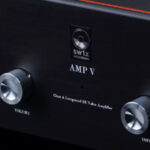
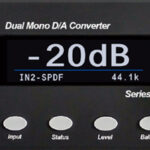

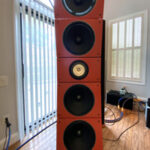
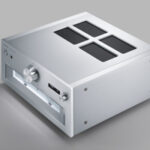
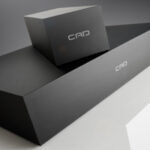

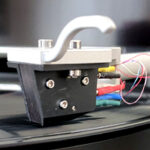
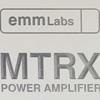


Streamer, you know you are a Streamer
Well can you put your hands in your head, oh no!
I said Streamer, you’re nothing but a Streamer
Well can you put your hands in your head, oh no!
I said, “far out, what a day, a year, a life it is!”
You know, well you know, you had it comin’ to you
Now, there’s not a lot I can do.
-Supertramp
Having taken poetic license with the lyrics to Supertramp’s Dreamer, I find myself at a technological crossroads, the horns of a dilemma. So let’s start off with some handy definitions:
Computer: A computer is a machine or device that performs processes, calculations, and operations based on instructions provided by a software or hardware program. It is designed to execute applications and provide a variety of solutions by combining integrated hardware and software components. (TECHOPEDIA)
Audio Streaming: Audio streaming is the practice of delivering real-time audio through a network connection. This type of data transmission requires certain protocols for handling the chronology of data packets or other transmission types, to provide the end-user with on-demand content. (TECHOPEDIA)
Now that we’re caught up on terminology and definitions, it’s time to make a very necessary distinction, a crucial one. There is a difference between an Internet connection where a device is online and a local area network (LAN) connection where a device is on a network but not necessarily online, connected to the Internet. To further clarify and make known the difference, I propose the following analogy: Streamers are to the Internet as Network Players are to a LAN.
With that in mind, the Streamer and the Network, at their respective cores, are far more similar than not. Taking the first-quoted definition above into account, both machines/devices are computers. The degree to which they may or may not be powerful and sophisticated is down to a number of factors: software design philosophy and functionality. Let’s compare Audirvana Plus and Roon, where the former espouses a lightweight design and feature set, and the latter just the opposite. It is not a matter of wrong or right, but rather the mindset of each solution provider and how they gauge the needs and concerns of the digital – in contrast to analog – audio enthusiast. Both of these solutions run on Microsoft Windows and Apple’s desktop OS X and mobile iOS platforms. Moreover, Roon can run on top of Linux, a flavor of Unix, the operating system/platform of choice for those running neither of the aforementioned mainstream platforms.
These Linux based solutions come in all sizes and price points from well known and regarded more expensive brands to newer, less known and less expensive ones. In a distributed solution, where the processes and functions are not running on one central machine/device, there is great latitude. Later this year I shall be writing about a rather interesting solution: ALLO’s USBridge (allo.com) operating off a SPARKY board with a separate USB daughterboard running DietPi. This unit is pre-configured to run a number of digital audio software solutions, and I was most taken with its Roon support out of the box to be configured as an endpoint in a matter of minutes. And yes, this device, which fits in the palm of my not-so-small hand, is too a computer.
Why am I going on about this? Here’s why. I get inundated with questions online and at Hi-Fi shows from enthusiasts who are technologically challenged – vexed by their computers – and thus fall into one of two camps: (1) their disdain for their computer has them not wanting anything resembling such anywhere in the visible proximity of their audio systems, or (2) they are constantly reading and/or being told/upbraided by experts that the use of a recognizable computer is not sufficiently audiophile. While both are understandable I am a fan of neither. And then there’s the real estate concern: Location, Location Location, and where exactly a device/machine should reside relative to the audio system. Where exactly should the storage/hard drives reside? Over the network on a network attached storage (NAS) solution or connected locally to the device/machine? Everyone and their fill in the blank maintains an opinion and with that degree of cacophony it’s no wonder enthusiasts are flummoxed.
From what they share with me, their biggest concern is that just about everywhere they seem to turn for trusted counsel they are met with agenda-driven respondents making claims of superior technological/audiophile design that they do not possess the requisite acumen to adjudicate. The one thing they understand – heck we all do – is price, and trying to get them to rationalize heady expenditures for something with a looming obsolescence factor is troublesome for everyone involved.
Let’s take a look at DACs and their half-lives. The top of the line DACI purchased in 2014 has been superseded technologically and functionally according to its designer in a scant four years. I am not about to argue against progress, but imagine my correspondence with those who wonder why their turntables, amplifiers, and speakers still function after decades of loyal service.
And then there’s the issue, assuming the Streamer/Network Player is not comprised of an integrated DAC, which of these two does the real heavy lifting, the source component or the DAC? Should more money be spent on one or the other? Can one make the other sound better? Should mainstream computers be negated as their USB implementation is sub-standard? What does that even mean? Why are all these companies hell-bent on selling enthusiasts all these additive products to improve upon the quality of the USB connection? All of the above are fodder for protracted online threads and offline discussions.
I make it a point to speak with as many digital audio solution providers as possible and will read their white-papers when made available as well as their marketing/publicity materials. More often than not I am faced with their addition by subtraction. Rather than adopting a proactive posture, they tend to be more reactive mitigating issues of noise, jitter, and isolation. All fine and well, but what are prospective customers getting for their money from one solution to the next? There are ramifications for those solution providers not rolling their own software and licensing 3rd party applications to run on their hardware. Not that it’s intrinsically a wrong thing to do, but it just makes it that much more similar to the prospective customer, subsequently making their purchase decision that much harder. And then there’s that chestnut, which software application sounds better? I can opt to take the 5th, or paraphrase MC Hammer’s sage advice ‘won’t touch this!’
Kudos to Roon. Just as light can be both wave and particle, Roon can be both client and server. I very much appreciate and welcome its universality across operating systems and flexible topological configuration options. I have become so expert and familiar with Roon that I can answer questions and troubleshoot without having to physically see the user’s display. That familiarity irrespective of the operating system upon which it runs is truly powerful. That’s why I see Roon as far more than an application, but rather a platform, a familiar migratable environment which can be transported from one Roon-capable hardware solution to another. Sure, Roon can be seen as pricey to some, but what price power, functionality, flexibility, and portability? If enthusiasts are willing to make the investment it may very well make their digital audio experience less of a burden. And before any of you jump off the mark to vent about your favorite software and suggest that I have not evaluated what’s out there on the market, let me assure you that in my office I have a Windows PC, a MacBook Pro, and countless Linux/Unix capable devices. Read that to mean I have encountered far more software solutions than just Audirvana Plus and Roon.
Lastly, an open suggestion to all manufacturers/designers of Streamers and/or Network Players: improve your messaging to your audience, your market, the HiFi enthusiast regardless of their technological expertise. I read your materials. I listen to your presentations as you exhibit at HiFi shows. Take this as an opportunity to be a lot more open and direct moving forward. Make it a point to clarify and if necessary correct what is being said on your company’s behalf online, specifically on Facebook and in various groups dedicated to digital audio. If you have not staked your claim with your own dedicated Facebook page and/or group devoted to your company and its products I implore you so to do. Dispel the myths, the confusion, the claims, the conflation of terms. If the feedback and correspondenceI receive globally is anything to go on, enthusiasts are victims of misinformation overload and as such their frustration levels are HIGH. #CodeRed
Copy editor: Dan Rubin